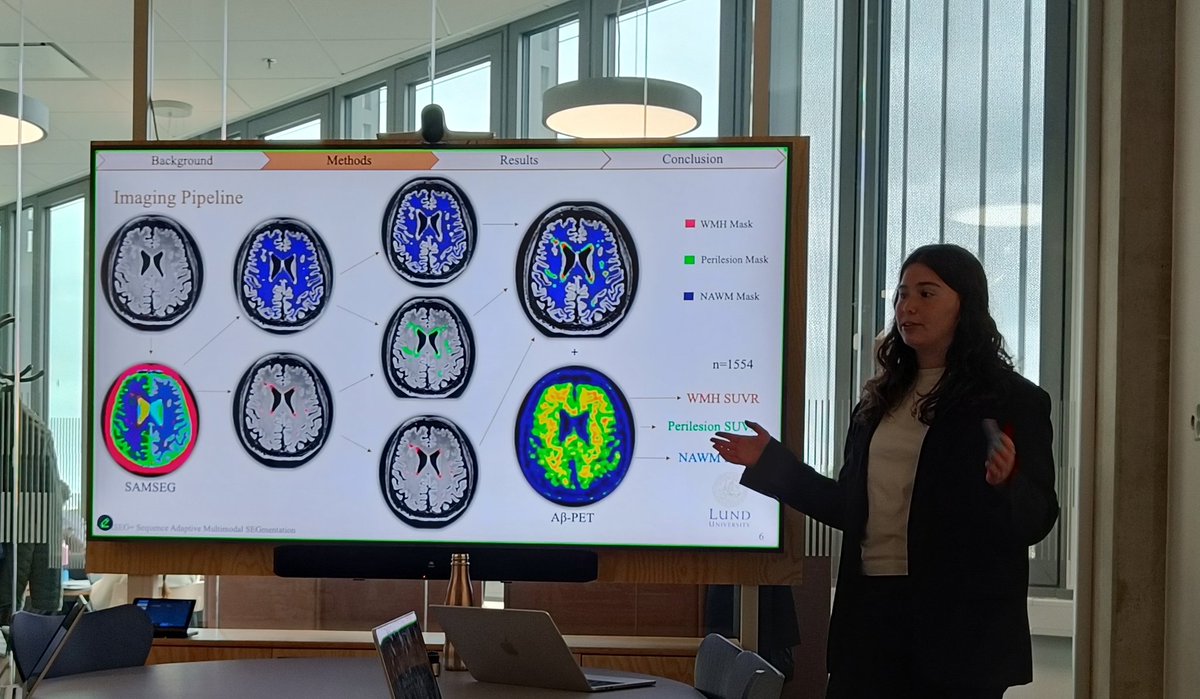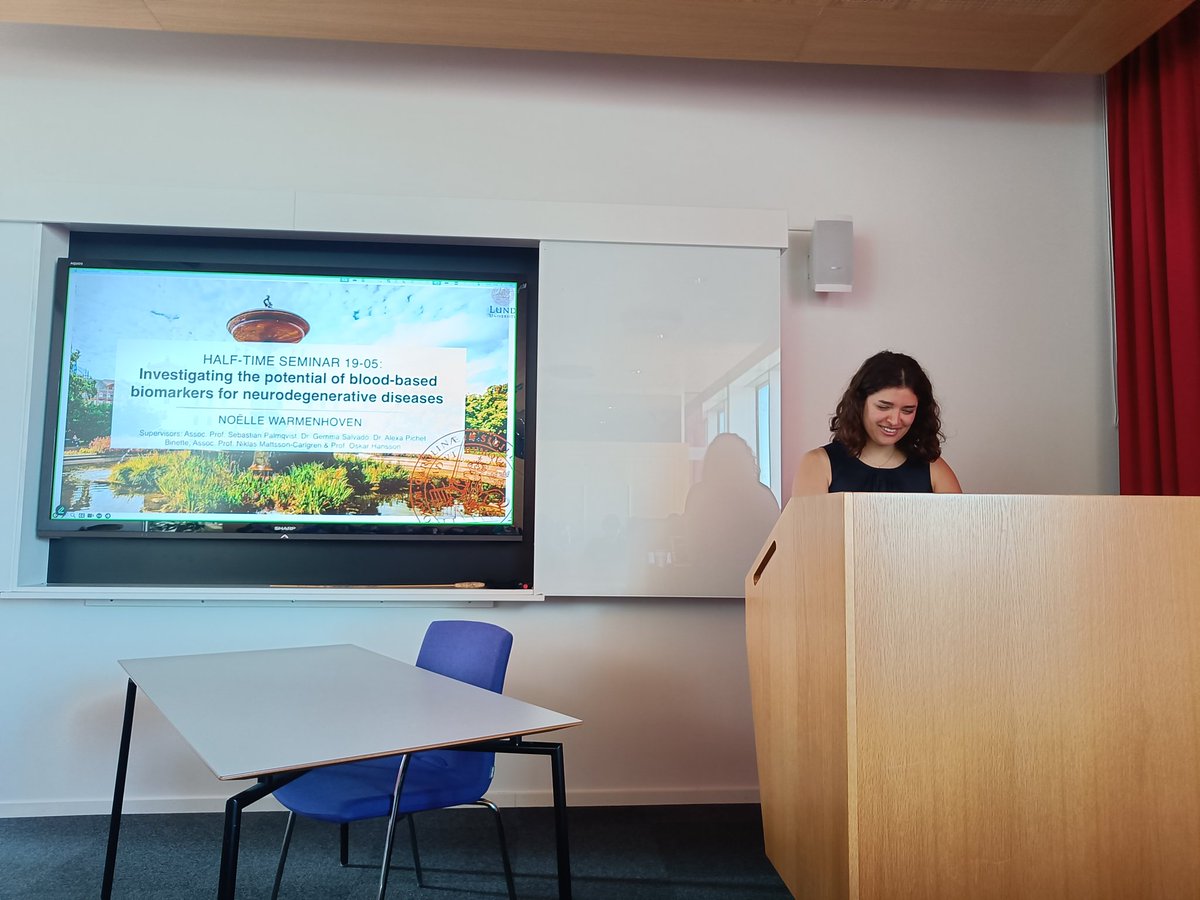
Gemma Salvadó
@gesalbla
Leader of the Neuroimaging group at @BarcelonaBeta & @fpmaragall / Associate researcher at @biofinder_study, Lund University #Alzheimer #biomarkers
🚨New publication in @NatureMedicine, co-led with @KantaHorie🚨 Huge step towards an accurate and scalable diagnosis for #Alzheimer's disease. In this study, we validated the novel MTBR-tau243 biomarker in plasma🩸 A short 🧵
Plasma eMTBR-tau243 is a specific #biomarker of #tau tangles in #Alzheimer’s disease and enables the detecting and tracking of Alzheimer’s clinical impairment. #NeurodegenerativeDiseases #AlzheimersAwareness #Biomarkers nature.com/articles/s4159…
Tau PET positivity in individuals (42 cohorts worldwide, N = 12,048) with and without cognitive impairment varies with age, amyloid-β status, APOE genotype and sex @RikOssenkoppele, @OskarHansson9, @AlzheimerAms, @biofinder_study nature.com/articles/s4159…
🚨 Heading to @EANM_NucMed meeting in Barcelona this fall? Don’t miss our special session on the future of PET imaging in the era of emerging Alzheimer’s disease treatments. Join the discussion on what’s next and why it matters #EANM2025 #Neuroimaging #Alzheimers
We have a date on October 7!🧠 We are organising the event "Clinical Use of PET in Alzheimer's Disease: Challenges & Opportunities". We'll bring together experts in the field of nuclear medicine and #Alzheimer's to explore the latest developments in PET imaging techniques.
Yesterday, Anika brilliantly defended her PhD thesis on the fole of MTL in Alzheimer’s disease. It was a brilliant discussion with @jmschott between peers. Congratulations Dr. Wuestefeld! You did a great job👏👏👏


Our most important paper, out now! A massive international collaboration, led by @AlexisMoscoso9, featuring over 6500 visually assessed tau PET scans covering the #Alzheimers spectrum! Thank you very much to the numerous contributors and collaborators who made this gem possible.
Tau PET positivity is detectable in a small but nonnegligible proportion of individuals in the preclinical stages of #Alzheimer disease, with increasing frequency in symptomatic stages of the disease. ja.ma/4e29SDX
Between 22% and 44% of dementia cases by age 80 are attributed to midlife and late-life vascular risk factors, according to this cohort study. ja.ma/4mGrnxG
Another impressive presentation today from @linneabriggner defending her bachelor project as a pro. Best of luck on your next endeavours, I'm sure you'll do great things!🎉

Today, @ncjwarmenhoven did a brilliant presentation during her half-time seminar showing her work in the first two years of her PhD. Well done!💪 Much more to come!

First of many after works of the Neuroimaging group. Happy to see this team growing. @BarcelonaBeta

So happy for @EmmaCoomans for this big accomplishment! Looking forward to seeing your talk. Please help her recommending the best neuroimaging papers of the year.
🚨Calling all neuroimagers! Help @EmmaCoomans shape the opening plenary at #AIC2025 (Toronto, July 26th) "Accomplishments of the Past Year" and share the most impactful neuroimaging research from the past year via this brief survey (~5min) by May 30th. act.alz.org/site/R?i=eOejF…
The field is moving from only assessing the presence of #Alzheimer's pathology to better categorising patients into different disease stages. Way to go to advance towards precision medicine.
Scientists use tau pathology markers in plasma and CSF to stage #alzheimersdisease. This could help identify and monitor people who might benefit from therapy. @goteborgsuni @mcgillu @lunduniversity @wustl ow.ly/saTg50VH4zj
This is an impressive work about biological drivers of tau burden and patterns of deposition. Way to go @xiaoyucaly 💪
🧠New preprint alert! Tau, the pathological protein in AD, spreads through the brain in a very particular pattern. But what drives this pattern? We found that WHERE tau pathology appears, and HOW MUCH accumulates there, are governed by different mechanisms. Check out our…
Among 1,767 patients in 5 centers, a fully automated blood test showed high accuracy for Alzheimer’s pathology in secondary and primary care using a predefined cutoff. nature.com/articles/s4159…
Lecanemab has been approved in Europe—the first disease-modifying treatment for #Alzheimer . Now, from public health centers, we must ensure equitable access, minimize risks, and offer the best care. 🧠🏥💚 @BarcelonaBeta @fpmaragall @hospitaldelmar ec.europa.eu/newsroom/sante…
Plasma eMTBR-tau243 is a specific #biomarker of #tau tangles in #Alzheimer’s disease and enables the detecting and tracking of Alzheimer’s clinical impairment. #NeurodegenerativeDiseases #AlzheimersAwareness #Biomarkers nature.com/articles/s4159…
Buscamos neurólogos/as para unirse a @BarcelonaBeta @fpmaragall 🧠👩🏻⚕️ ➡️estudios observacionales, ensayos clínicos ➡️investigación (con opciones de PhD y postdoc), ➡️actividad clínica en @hospitaldelmar Aplica en el enlace👇 barcelonabeta.org/es/centro-inve…
📢Our latest study, now published in @NatureMedicine , explores the potential of blood biomarkers on an automated platform to detect #Alzheimers . Plasma p-tau217 showed remarkable accuracy, with AUCs ranging from 0.93-0.96! 🩸🧠 Read more here: nature.com/articles/s4159…
New manuscript alert! Can blood-based biomarkers measured on a fully automated platform accurately identify Alzheimer’s disease (AD) pathology?🩸 Our new multi-cohort study has now been published in @NatureMedicine: nature.com/articles/s4159…. A thread🧵
So proud of @BarcelonaBeta and @biofinder_study teams for this very important work on validating an easily-available plasma biomarker for #Alzheimer's diagnosis. Special kudos to my PhD student @ncjwarmenhoven, co-first author of the paper👏👏👏
A major breakthrough in Alzheimer’s detection: A blood test may soon help diagnose the disease early—with over 90% accuracy. Researchers from the #BBRC @hospitaldelmar @uniofgothenburg @lunduniversity have validated the usefulness of a blood biomarker in the clinical setting 👇